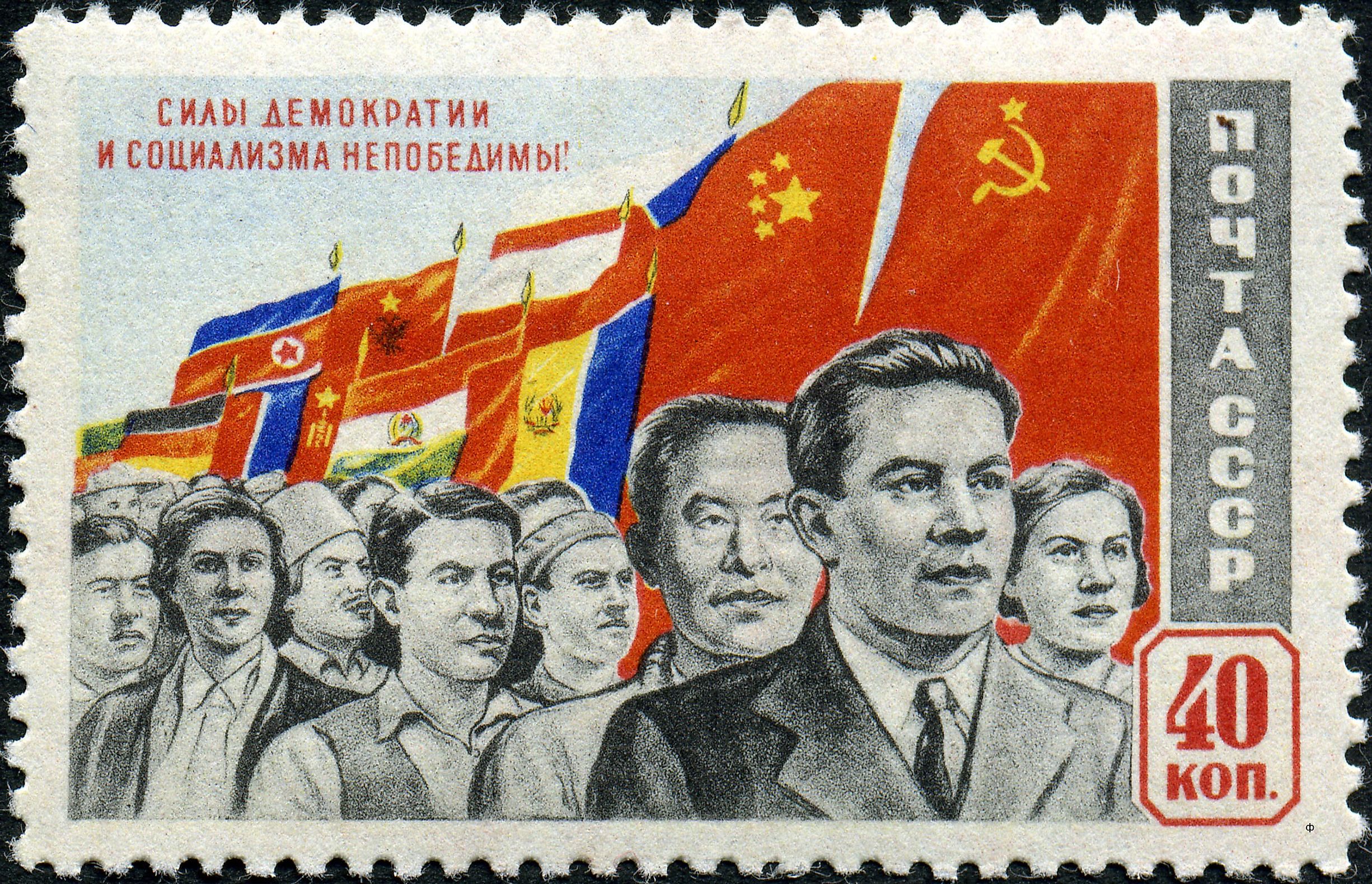
What Was The Eastern Bloc?
The concept of the Eastern Bloc is a nebulous one and, therefore, worth taking the time to dismantle and simplify as much as possible. Its formation history and identity spans nearly a hundred years, up until a sudden collapse in the summer of 1990. Unlike more familiar categorization based on geographic borders alone, the designation of the Eastern Bloc is more fluid due to the rapidly changing agreements and bombastic events that occurred throughout the 20th century. A minimalist approach would be to label all countries united under a form of socialism and communism as the Eastern Bloc. In contrast, countries, and powers that identified as capitalist are often dubbed the Western Bloc. The caveat exists in how and why these entities are grouped, which is a history worth unraveling to understand the many modern-day tensions that have carried over, including the current Ukrainian invasion.
Formation Of The Eastern Bloc
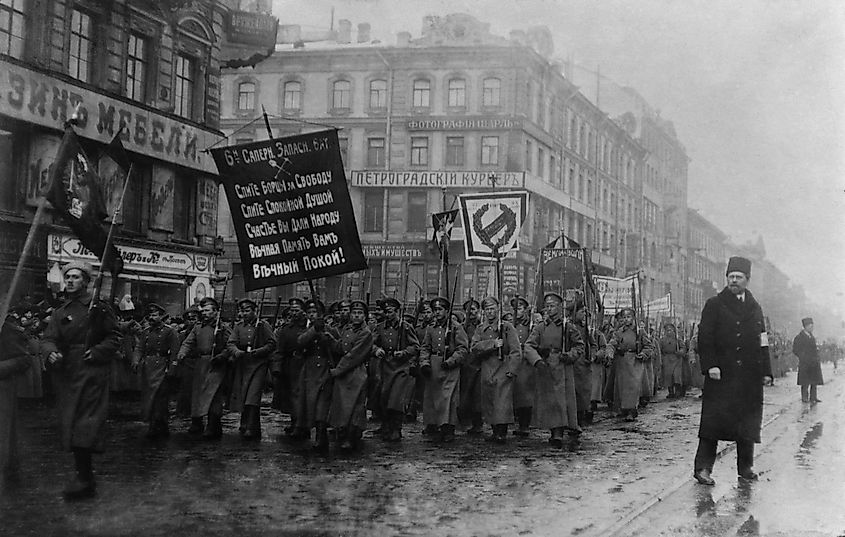
The establishment of the Eastern Bloc is intimately tied with the ebb and flow of Russia’s political movements that followed the February revolution of 1917, in which the Tsar’s monarchy was toppled. In February of that year, a provisional government was established to manage government operations. Peasant revolts were common, as low production, food scarcity, and the ongoing world war continued to take a toll on the people. Therefore, by the end of 1917, Lenin and the Bolshevik party seized power and nationalized the majority of private property, and they also introduced reforms like an eight-hour workday.
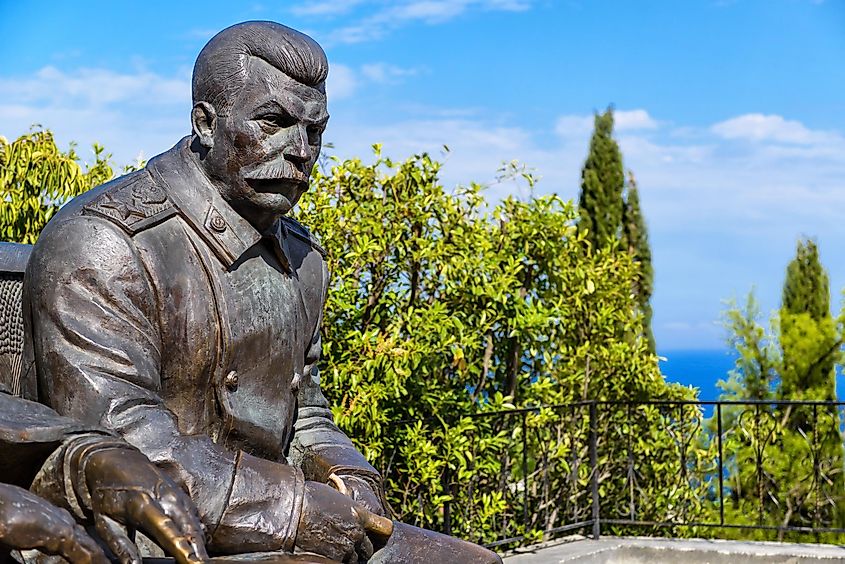
However, with Stalin in office from 1922 until 1952, the aims of the USSR became one of power consolidation that many believe lost touch with the original ideals of “Peace, Land, and Bread.” During World War II, the borders and identities of many countries were in a state of dissolution, and that power vacuum allowed the Eastern Bloc to attempt expansion. In the case of some regions, much of that instability, and subsequent absorption, was a result of the USSR invasion that later motivated the desertion of the Eastern Bloc by countries like Poland and Germany.
Composition Of The Eastern Bloc
Following the 1922 formation of the USSR, a communist-based entity made up of Russia, Belorussia, Ukraine, and the Transcaucasian Federation (Georgia/Azerbaijan/Armenia), the upheaval of World War II motivated many countries to ally themselves with either economic power. The Western bloc was naturally comprised of modern NATO countries whose de facto leader was the USA, while the Eastern Bloc was a fluid unification between communist-oriented nations. For example, Yugoslavia was expelled from these aligned interests in 1948, and Albania withdrew in 1961. The exact dates that these following countries joined and left the Eastern Bloc are somewhat varied; the core identity of the Eastern Bloc revolved around Albania, Bulgaria, Cuba, Czechoslovakia, East Germany, Hungary, Mongolia, Poland, Romania, the Soviet Union, and Vietnam.
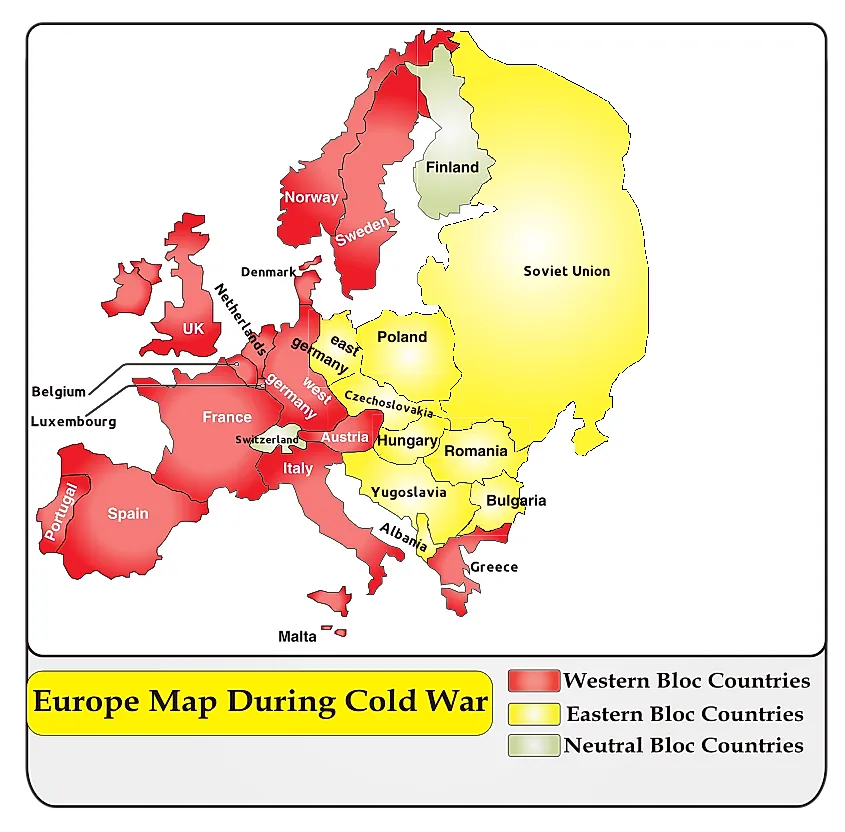
Other aligned nations (all of which again had no singular formation or dissolution date) include Afghanistan, Angola, Benin, China, PR Congo, Ethiopia, Grenada, Kampuchea, North Korea, North Vietnam, Laos, Madagascar, Mozambique, Somalia, South Yemen, and Yugoslavia. Both core and satellite nations received significant aid through trade and humanitarian support.
Many 20th-century conflicts, such as the Cuban missile crisis and the Vietnam war, centered around the unresolvable disagreements between the countries that made up these Eastern and Western blocs. Identifying countries that joined the Eastern bloc through the Warsaw Pact and Comecon is important because the term “Eastern Bloc” has been flexibly used by Western Countries to ostracize countries that at the time were part of a third Bloc: the Non-Aligned Movement, a neutral group.
Policies And Purpose
Labels like Eastern, Western, and Non-Aligned fail to convey the depth of disparity that comes between the 20th-century capitalist and communist systems. After all, there must be identifiable characteristics and distinctions that form an explanation for the countless proxy wars and hostilities between the two axioms. Although, it is important to note that these abstract ideals are comprised of many vested interests and can never perfectly align with their foundational beliefs. The general difference, however, is between support for private ownership and support for collective ownership. The roots of Eastern Bloc philosophy are seen in the original serfs who were furious to neither profit from nor own the land they lived, worked, and died on.
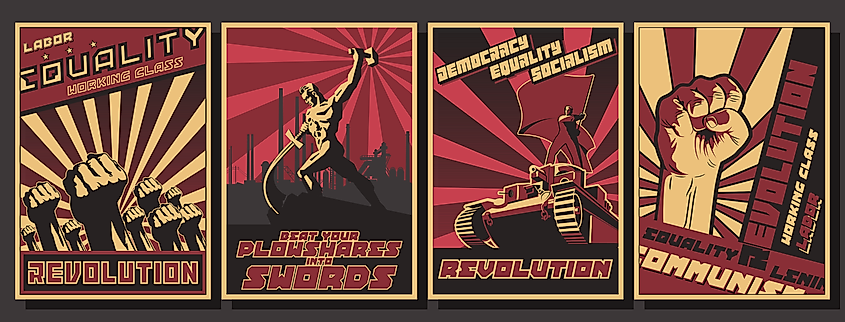
In contrast, Western politics sought to promote a ‘free market’ that encouraged competition to make the most of 20th-century industrialization. If wealth is abundant, then, in theory, even the poorest of people can access housing and health. As a former member of the Eastern Bloc, China’s approach to the dilemma is worth remarking on. In their case, the utilization of capitalism for a limited period has been argued to be a means to an end. Leaders like Deng Xiaoping and Hua advocated for a pseudo-capitalist state that would ride the wave of a semi-free market, only to be consolidated by swift socialist regulation. The difference in approach can be understood by comparing varying degrees of economic isolation, with communist states like the sanctioned North Korea on one end, modern-day Russia somewhere in between, and China sitting closer to the West in terms of cooperation.
Dissolution Of The Eastern Bloc
As far back as 1917, Russian (and thereby Eastern Bloc) policy had sought to heavily restrict the emigration and movement of citizens, even within their territories. This pressure built over time and became ultimately unavoidable, as the appeal of Western democracy caused a rapid chain of social discontent in the late 20th century.
The identity of the Eastern Bloc rested on the Warsaw Pact and Comecon, the formal agreements bonding many of the member nations together. Countries had often come and gone, but the core group persevered. Symbolically, the Berlin Wall of East Germany tangibly represented those final years. Citizens strove to immigrate en masse to western controlled nations, even under the threat of death.
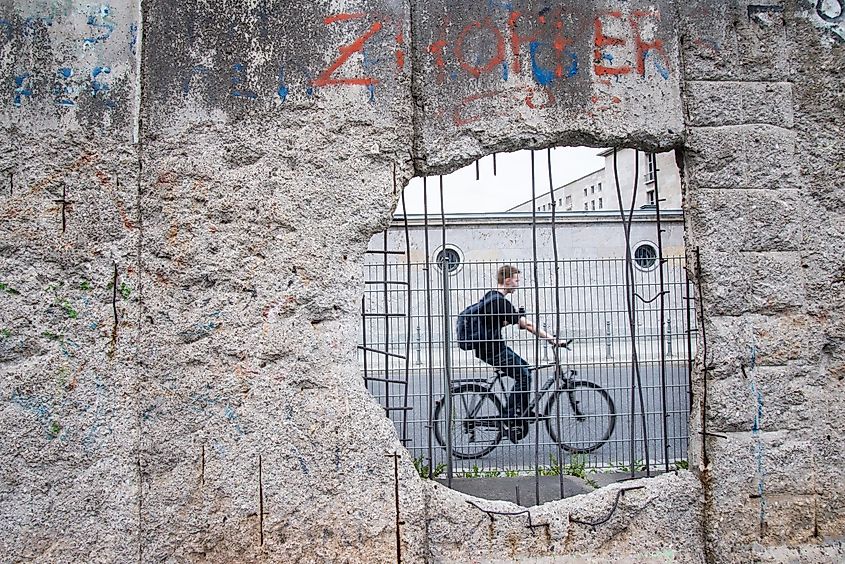
Despite decades of suppression, the number of protests and revolting parties overwhelmed the Eastern Bloc’s ability to stay intact. The latter years of the Eastern Bloc are marked by the last leader of the USSR, Gorbachev, attempting to liberalize and reform. These measures aimed to reconcile with western forces to address economic disparity and public discontent but were simply not enough, and by 1990, the Eastern Bloc disintegrated.
Time creates a comfortable distance that allows students and scholars to ruminate over the merits and failures of the leaders and people groups who sculpted the past. From the perspective of political parties, the results of new policies during unstable times are not always immediately clear. Moreover, a policy that might create short-term prosperity might have devastating long-term consequences, such as the exploitation of limited natural resources.
While it is impossible to state whether the leaders of Western and Eastern Bloc ideology always had the purest of intentions, the reality is that many of those involved simply desired a better life for themselves, their family, and their fellow countrymen. The Eastern Bloc united in hopes that feudalistic policies could be completely overturned in favor of populist interests; in many ways, that goal was accomplished, and in many ways, that goal failed. The echoes and tensions of our 20th-century precursors still reverberate today, and an approach focused on “Peace, Land, and Bread” will forever be a noble one.











